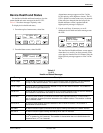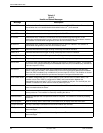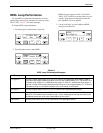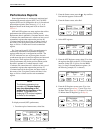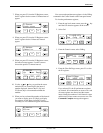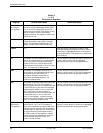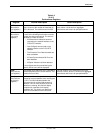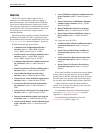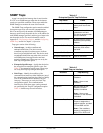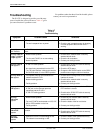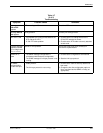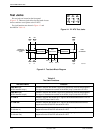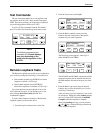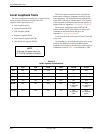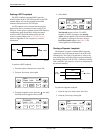
Maintenance
4-113360-A2-GB20-20 December 1996
SNMP Traps
A trap is an unsolicited message that is sent from the
E1 NTU to an SNMP manager when the device detects
certain, pre-specified conditions. These traps enable the
SNMP manager to monitor the state of the network.
The SNMP Trap configuration option must be enabled
for trap messages to be sent over the communications
link. You must specify the number of SNMP managers
that are to receive traps from this device, an IP address for
each SNMP manager specified, and the type of traps to be
sent from this device. For more information, refer to
Appendix C, Configuration Options, and the Configuring
SNMP Traps section in Chapter 3, Operation.
Trap types consist of the following:
• General traps – include warmStart and
authenticationFailure. The device sends a
warmStart trap after it has been reset to indicate
that it has just reinitialized itself. The device sends
an authenticationFailure trap when it has received
an SNMP protocol message that has not been
properly authenticated. These traps are set by the
Gen Trap configuration option.
• Enterprise Specific traps – signify that the device
has recognized an enterprise-specific event. See
Table 4-5 for enterprise-specific traps. These traps
are set by the Entp Trap configuration option.
• Link Traps – identify the condition of the
communications interface, either linkDown (one of
the communications interfaces has failed) or linkUp
(one of the communications interfaces has just
come up). These traps are set by the Link Trap
configuration option. The communications
interfaces for which these traps can be generated
are specified by the Trap I/F configuration option.
Table 4-6 defines traps for each interface.
Table 4-5
Enterprise-Specific Trap Definitions
Trap Value
Event
enterpriseClockFail(1) The currently configured
primary clock source has
failed.
enterpriseSelfTestFail(2) A device hardware failure
is detected at self-test.
This trap is generated after
device initialization.
enterpriseDeviceFail(3) An internal device failure is
detected by the operating
software.
enterpriseSecClockFail(4) The currently configured
secondary clock source
has failed.
enterpriseTestStart(5) A test is initiated.
enterpriseTestClear(105) A test is concluded.
Table 4-6
SNMP Trap per Interface
Interface
Trap Meaning
HDSL Network Up = No alarm or test
conditions.
Down = Alarm or test
conditions.
G.703 DTE Up = No alarm or test
conditions, and the
interface is enabled.
Down = Alarm or test
conditions, or the interface
is disabled.
Synchronous Data Ports Up = No test conditions,
the port is assigned to a
network interface, and both
CTS and DSR are ON.
Down = Test conditions,
the port is unassigned, or
either CTS or DSR is off.



